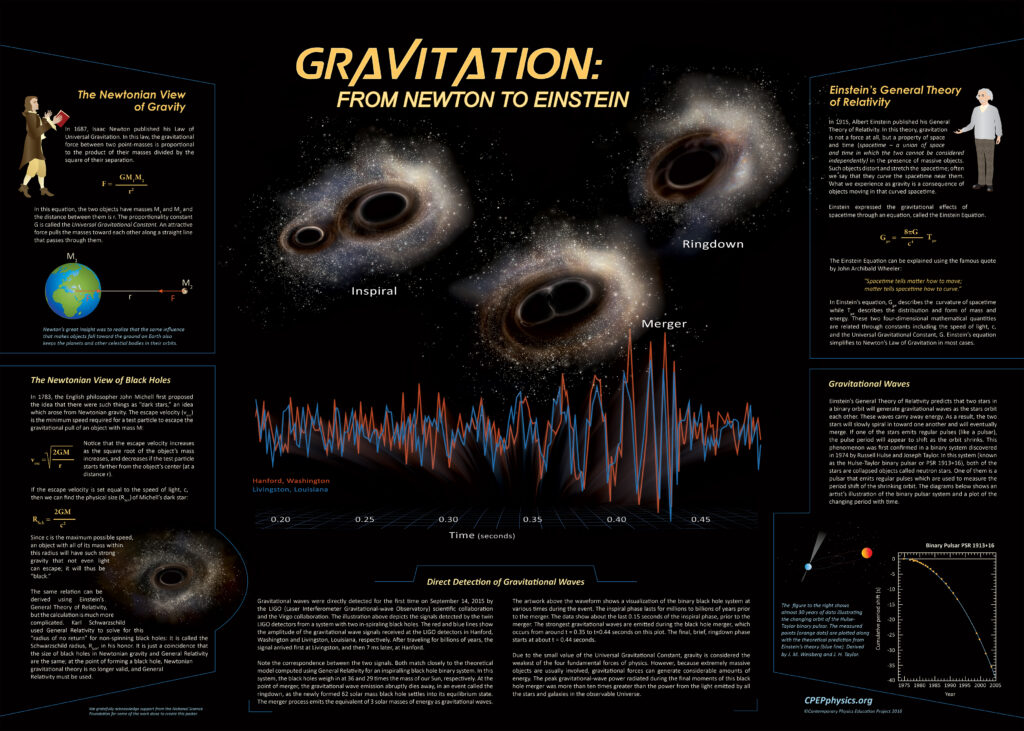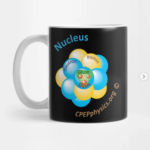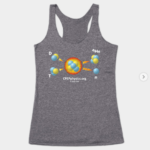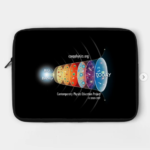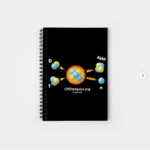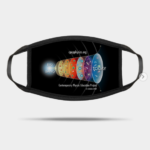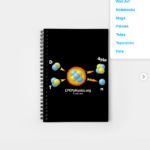Resource Overview
For nearly 30 years, the Contemporary Physics Education Project (CPEP) has created and distributed colorful and inspirational charts and posters that present the state of knowledge in various sub-fields of Physics. To learn more about each physics sub-field, please read the sections below describing each of the CPEP charts. From there, you can also find the links to further resources on each sub-field, as well as a link to order the charts through Amazon.
Support CPEP and Look cool doing it!
CPEP Merchandise
Fundamental particles and Interactions
The Fundamental Particles and Interactions chart emphasizes the latest particle research. All new, with a completely new design and greatly updated content including more about neutrinos and a section on “Unsolved Mysteries” including dark matter and dark energy. The new version has updated information on the subatomic world of quarks, electrons, neutrinos, gluons, antimatter, and the top quark. The chart is available in wallchart, poster and placemat sizes.
A feature story in Science Magazine, headlined “Move Over Mendeleyev,” described the CPEP “chart of the subatomic world” as “the physicist’s answer to the chemist’s periodic table of the elements.” The story discusses injecting “the excitement of the latest physics into classroom teaching.” More than 200,000 copies of the chart have been distributed.
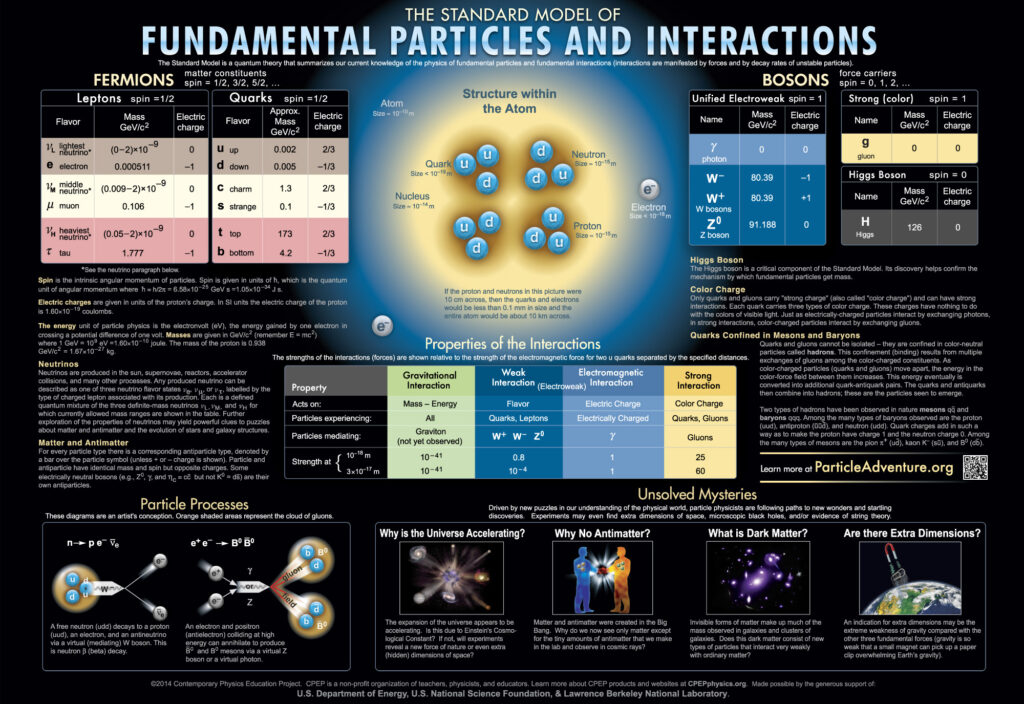
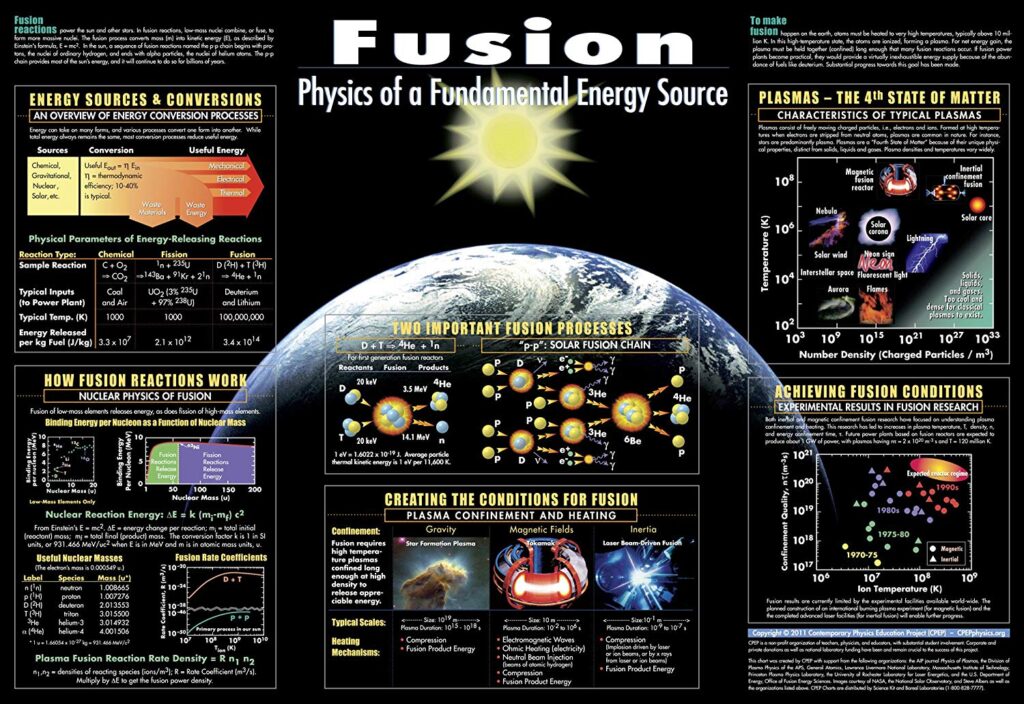
Fusion - Physics of a Fundamental Energy Source
History and Fate of the Universe
The History and Fate of the Universe chart illustrates what is now known about cosmology, dark matter, dark energy, and the fate of the universe. The chart is filled with information covering a broad range of cosmological topics, including the Big Bang and the accelerating universe.
The centerpiece is an evolutionary timeline that takes viewers from 10-43 seconds, when the now-visible universe was smaller than a proton, to the current era, about 14 billion years later, when the visible universe contains 4 x 1011 galaxies. Side panels provide short discussions on the birth, inflation and expansion of the universe, the cosmic microwave background, and redshifts of distant supernovas.
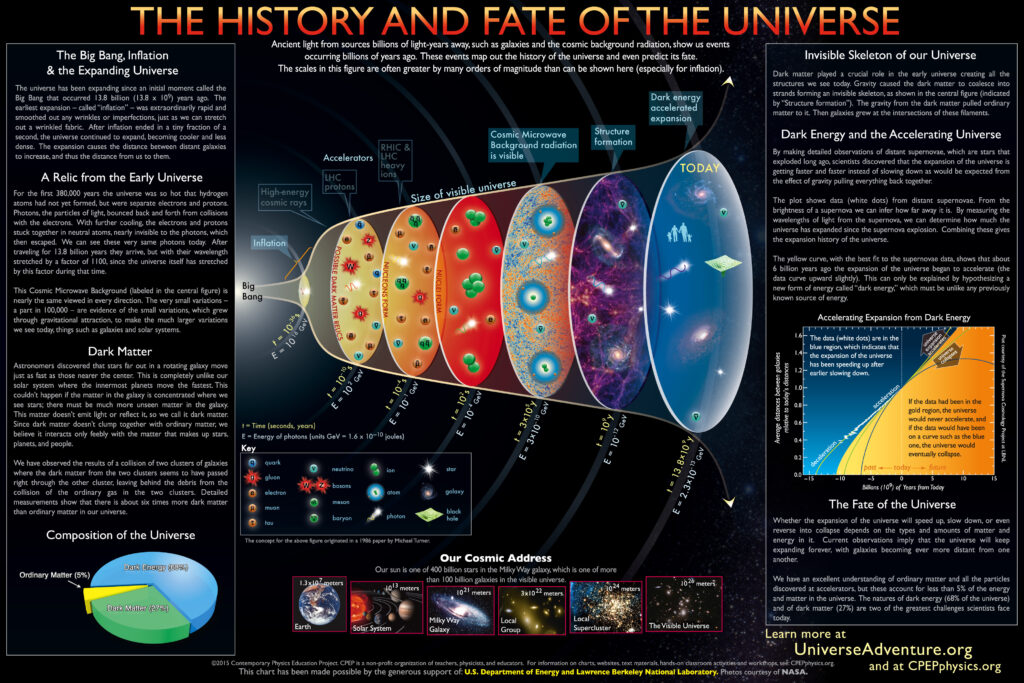
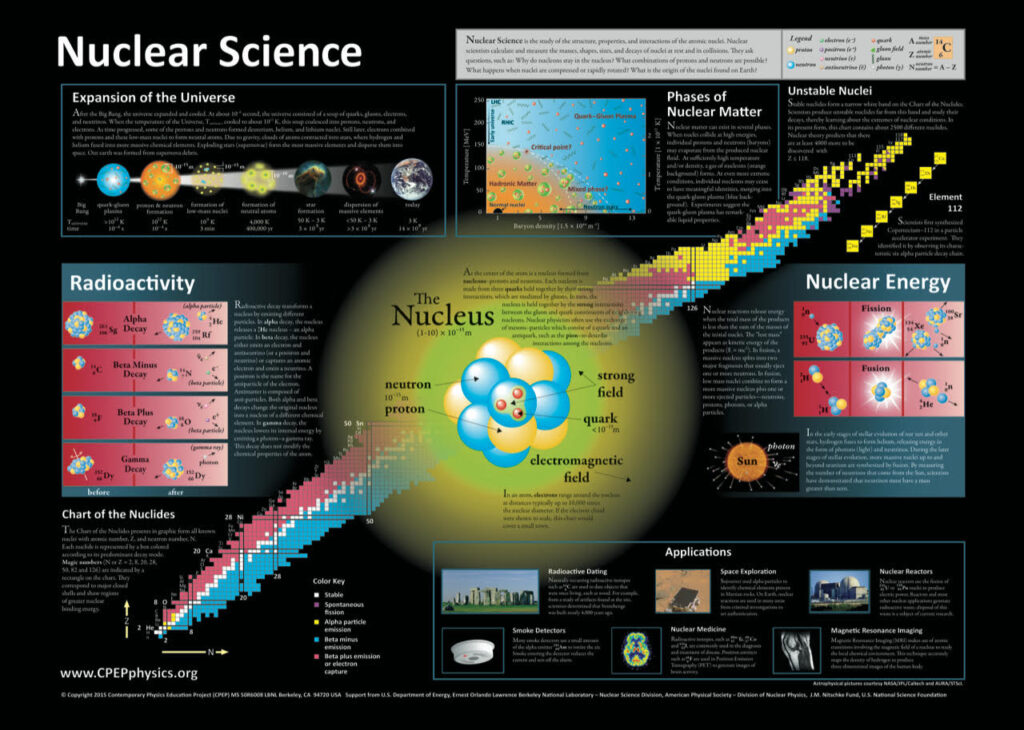
Nuclear Science
The chart includes results from nuclear interactions studied all over the world including the Large Hadron Collider at CERN, where the energy of the collisions are more than 100 times greater than those used to discover the Higgs boson. These results give us a glimpse at the Universe when it was fractions of seconds old.
GraVITATION
The “Gravitation: From Newton to Einstein” chart illustrates the discovery of gravitational waves on September 9th, 2015 from two merging black holes, as inferred from data from NSF’s Laser Interferometer Gravitational-wave Observatory (LIGO). Sidebar panels contrast Newton’s Law of Gravitation with Einstein’s General Theory of Relativity. Also included is a Newtonian calculation of a black hole’s event horizon, and an explanation as to the origin of gravitational waves in merging compact binary systems.
